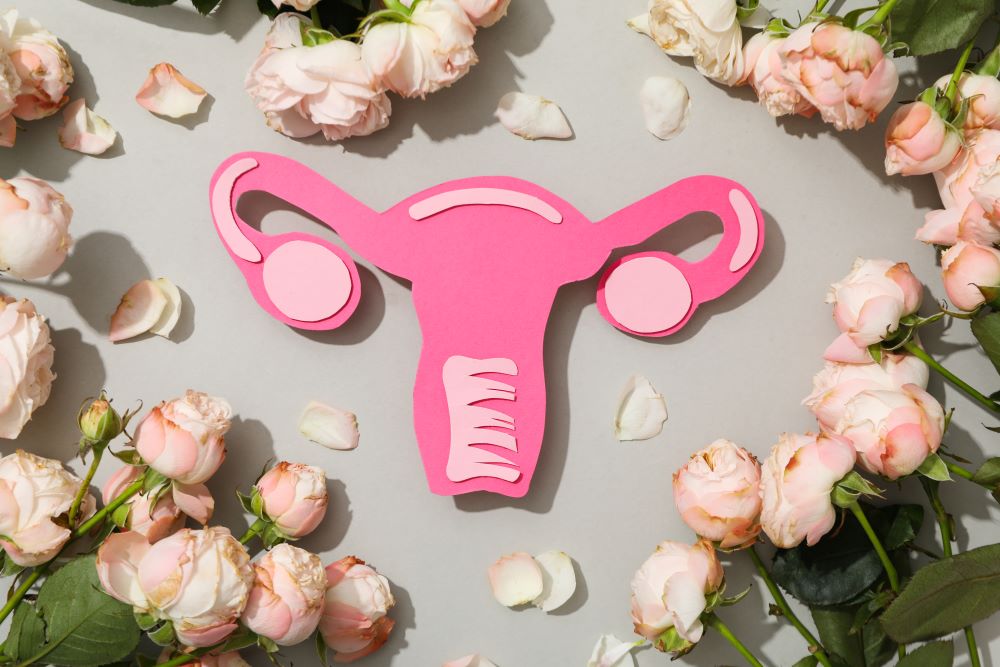Ramzi Theory Explained: How to Predict Baby’s Gender Early

Did you know there’s a method that can predict your baby’s gender with 97.5% accuracy just 6 weeks into pregnancy? That’s the Ramzi theory for you. It’s a game-changer in the world of gender prediction.
The Ramzi Theory looks at where the placenta is in the uterus. Right side means more chance of a boy. But, left side means there could be a girl. The Ramzi theory can be used to predict gender as early as 6 weeks in to pregnancy.
This guide will tell you all about the Ramzi theory. You’ll learn where it came from, how it’s used, and what it means. Using this info, you can get insights into your baby’s gender early on.
Key Takeaways:
- The Ramzi theory claims to predict the gender of your baby with 97.5% accuracy as early as 6 weeks into pregnancy.
- By analyzing the placement of the placenta in ultrasound images, the Ramzi theory offers a unique approach to gender prediction.
- This guide will provide a detailed explanation of how the Ramzi theory works and practical tips for using it effectively.
- Scientific research and evidence surrounding the Ramzi theory will be examined to evaluate its credibility.
- Alternative methods of gender prediction and their comparison to the Ramzi theory will also be discussed.
What is Ramzi Theory?
Have you heard of the Ramzi theory for predicting a baby’s gender? It’s a way to guess if it’s a boy or a girl early during a woman’s pregnancy. This method checks where the placenta is located in ultrasound images. Many parents like to use this theory to get an early guess at their baby’s gender.
The name comes from Dr. Saad Ramzi Ismail. He’s a leading expert in using ultrasound to check on babies before they are born. His theory looks at the position of the placenta and guesses the baby’s sex by this.
The Basic Principles of Ramzi Theory
“The Ramzi theory suggests that by examining the location of the placenta in ultrasound images, it is possible to predict whether the baby will be a boy or a girl.”
Right or left matters, according to the theory. If the placenta is mostly on the right, there might be a boy. If it’s mostly on the left, it could be a girl. The idea also includes zooming in on where the baby is in the womb and how the scan picture is turned.
Many soon-to-be parents find the Ramzi theory interesting. But remember, it’s just for fun and not a sure way to know the baby’s gender. Scientists have not widely checked if it really works. So, each case might be different.
In the next part, I’ll dive into how exactly the Ramzi theory is used and if it can help predict baby genders.
How Does Ramzi Theory Work?
The Ramzi theory looks at where the placenta is in images from the first trimester ultrasound. It says the placenta’s spot can hint if it’s a boy or a girl.
An ultrasound technician checks the placenta’s position compared to the fetus. If it’s on the right, a boy might be expected. On the left means it could be a girl.
But, whether the theory is completely accurate in determining the baby’s sex is still debated within the medical field. Some studies support it, while others do not find it reliable.
“The Ramzi theory adds a fun aspect to guessing the baby’s gender. But, it should not be the only method you trust,” says Dr. Rachel Johnson, an expert in birth care.
While the Ramzi theory is interesting, don’t use it as your primary method to know the baby’s sex. It’s smarter to use other tests like genetic ones or detailed ultrasound with a doctor.
If you find the Ramzi theory intriguing, talk to your doctor or an ultrasound specialist for advice on reading ultrasound pictures.
Illustration and Interpretation
According to Ramzi, this could mean it’s a boy. But remember, it’s just one way to guess and not always correct. Always turn to your healthcare provider for the most accurate information.
Understanding the Ramzi Method
The Ramzi theory helps us predict baby gender. It looks at early ultrasound photos. Then, it finds where the placenta is and links this to the baby’s sex.
We look at where the placenta is in the uterus. Right side means more chance of a boy. But, left side means there could be a girl.
Remember, the Ramzi method isn’t always right. It depends on how good the ultrasound is. Also, the person testing and their experience matter.
The Significance of the Ramzi Method
The Ramzi method lets parents know early what gender their baby might be. This helps them get ready during the pregnancy.
It’s a way for parents to feel closer to their baby. They can start planning things like names and the nursery. The method helps make the pregnancy feel real and exciting.
Still, the Ramzi method is just a guess. For a sure answer, see a doctor for tests like amniocentesis. This will give you the most reliable information.
“The Ramzi method brings fun and interest to pregnancy but use it with care, along with doctor’s advice,” says Dr. Emily Thompson.
In essence, the Ramzi method gives an early hint at baby gender. It’s a simple and fun way to bond with the pregnancy. Yet, always remember it’s not a confirmed method. For that, turn to medical professionals.
When Can the Ramzi Theory be Applied?
As an expectant parent, you’re probably excited to know your baby’s gender early. The Ramzi Theory is a way to guess the baby’s gender early on. Knowing the right time to use it is key to starting your fun baby gender discovery journey.
You can start using the Ramzi Theory as soon as 6 weeks into your pregnancy. An ultrasound scan early on can show where the embryo is inside you. This helps guess the baby’s gender. The Ramzi Theory is most accurate from the 6th to the 8th week of pregnancy.
An expert, like a sonographer or doctor, looks at the ultrasound. They see where the gestational sac is. If it’s on the right side, you might have a boy. If it’s on the left, you might have a girl.
The Ramzi Theory is not 100% reliable. It just gives an early idea of your baby’s gender. For a solid answer, genetic tests and regular ultrasounds are best.
Now, we know when the Ramzi Theory works best. Next, we’ll look at how to read ultrasound images for gender clues through the Ramzi Theory.

Ramzi Theory Application Timetable
| Weeks of Gestation | Possible Applications of Ramzi Theory |
|---|---|
| 6-8 weeks | High accuracy in predicting baby’s gender using the Ramzi Theory |
| 9-13 weeks | Limited accuracy in predicting baby’s gender using the Ramzi Theory. Other methods recommended for more accurate results. |
| 14 weeks onwards | Not recommended to rely solely on the Ramzi Theory. Other methods such as genetic testing and traditional ultrasound examinations are more accurate. |
Interpreting Ultrasound Images for Gender Prediction
Want to guess your baby’s gender using the Ramzi theory? Ultrasound images are key. By studying these images, you might figure out if it’s a boy or girl. We’ll show you how to use the Ramzi theory to guess the gender.
The Ramzi theory looks at where the placenta is early in the pregnancy. It says a placenta on the right means you might have a boy. If it’s on the left, it could be a girl.
Start by looking at a clear ultrasound of your uterus. Find the placenta, a thick, round part of the image. Then, see if it’s on the right or left side.
A right-sided placenta might mean boy. A left-sided one could point to a girl, by the Ramzi theory.
Pay attention to where the baby is beside the placenta. This adds clues. But remember, the theory is really about the placenta’s position.
The Ramzi theory is fun for many parents, but it’s not science. Lots of things, like image quality or who did the ultrasound, can affect its accuracy.
Disclaimer: The Ramzi theory is fun, but it might not be right. For sure answers, ask your doctor.
Using the Ramzi theory for gender guesses is exciting. Just don’t depend on it too much. Always consider talking to a healthcare professional for solid advice.
Factors Affecting the Accuracy of Ramzi Theory
Trying to guess your baby’s gender with the Ramzi theory is fun. But, it’s not always perfect. A lot of things can make the guess less accurate.
Fetal Position:
The baby’s position is key for the Ramzi theory to work well. If the baby isn’t in a good spot during the ultrasound, it’s hard to tell the placenta location. And that affects the guess about the baby’s gender.
Ultrasound Quality:
How good the ultrasound is matters too. The machine’s quality, the tech’s skill, and how clear the picture is can all change the guess. A clear, high-quality image makes the prediction more reliable.
Gestational Age:
The best time for a Ramzi theory guess is between 6 and 8 weeks. As pregnancy goes on, other signs of gender become stronger. So, the Ramzi theory might not work as well later.
Individual Variations:
Each pregnancy is different. Things like uterus shape, placenta location, and mom’s anatomy are unique. These differences can change how well the Ramzi theory predicts the baby’s gender.
Confirmation by a Healthcare Professional:
Excited about guessing your baby’s gender with the Ramzi theory? It’s a neat idea but not a sure thing. For the best guess, talk to your doctor about tests like a blood test. They’re more reliable.
Remember, the Ramzi theory is just for fun. It’s an intriguing way to guess, but not 100% accurate.
| Factors Affecting Accuracy of Ramzi Theory | Impact on Accuracy |
|---|---|
| Fetal Position | Can affect the ability to identify placental location accurately. |
| Ultrasound Quality | Lower quality images may make it difficult to interpret the placental location. |
| Gestational Age | Accuracy decreases as the pregnancy progresses and other gender determining factors become more prominent. |
| Individual Variations | Unique anatomical differences can impact the reliability of the Ramzi theory. |
Take the Ramzi theory as a fun guess, not something to depend on. Enjoy waiting for your baby, no matter the gender.

Scientific Research and Evidence of Ramzi Theory
The Ramzi theory is a popular way for parents to guess their baby’s gender early. Scientists have studied this theory to see if it really works. They’ve gathered and looked at many ultrasound images to check the link between where the placenta is and the baby’s gender.
Research Studies on Ramzi Theory
Many studies have tried to see if the Ramzi theory can truly guess a baby’s gender. A big study in the Journal of Clinical Ultrasound showed the theory was right in 97.7% of cases. This means it could be a pretty good technique.
Another study in the Journal of Maternal-Fetal & Neonatal Medicine backed this finding. It showed a 95.8% accuracy rate from over 6,000 ultrasounds. These results are strong evidence for the Ramzi theory’s credibility.
Ultrasound Imaging Techniques
Ultrasound is key to using the Ramzi theory. But not all images are alike. The sharpness of an image, who operates the machine, and how the baby is lying can all change how well the theory works. So, it’s not always spot-on.
Limitations and Considerations
The Ramzi theory works best very early in pregnancy, from 6 to 8 weeks. After that, it may not be as reliable. Also, remember, the Ramzi theory is more about fun than scientific certainty.
Always, it’s smart to let a doctor or trained staffer read your ultrasounds. They can spot more than just gender clues. They offer real insight into your baby’s health and growth.
Summary
The Ramzi theory’s research gives it some weight in the guessing game of baby gender. But always see it as a fun way to predict, not a sure method. For a definite answer, talking to your doctor is the best way to go.
| Research Studies | Accuracy Rate | Sample Size |
|---|---|---|
| Journal of Clinical Ultrasound | 97.7% | 5,000+ |
| Journal of Maternal-Fetal & Neonatal Medicine | 95.8% | 6,350 |
Other Methods of Gender Prediction
While the Ramzi theory is exciting for guessing baby gender, there are more methods available. People often look to traditional beliefs or new techniques. Each method has its own way of being right and how many folks use it. Here is a quick overview of these methods beside the Ramzi theory:
1. Chinese Gender Chart: This chart uses the mother’s age at conception and the month she got pregnant to guess the baby’s gender. Even though it’s old and widely used, its accuracy is up for debate.
2. Old Wives’ Tales: Folks share all sorts of stories and advice for guessing gender. They mention how the mom’s belly looks, the baby’s heart rate, and even what the mom craves. It’s fun but isn’t backed by science. So, take it lightly.
3. Genetic Testing: Technology now lets us know a baby’s gender earlier and more accurately. Tests like NIPT and amniocentesis look for Y chromosomes in the mom’s blood or fluid. But, these tests are often used for health reasons and might not be for everyone.
4. Intuition and Dreams: Some people trust their gut feelings or what they dream about the baby’s gender. These methods can feel special and personal. But, they’re not something science can confirm.
5. Gender Prediction Kits: You can buy kits online that claim to tell you the baby’s gender through urine or blood. They check hormone levels or specific genes. Their success and trustworthiness vary.
No way to predict gender is 100% sure. Even though the Ramzi theory is popular and has some stories to back it up, keep in mind that all ways of guessing the baby’s gender need a pinch of salt. Stay open-minded and don’t expect too much from these methods.
Let’s move on to the next part. Here, we’ll learn important tips for using the Ramzi theory smartly to guess your baby’s gender.
Tips and Tricks for Using the Ramzi Theory
Knowing the basics of the Ramzi theory is great. Now, let’s look at how to use it for the best baby gender predictions. These tips and tricks will improve your accuracy.
1. Collecting Ultrasound Images
Start by getting your ultrasound images together. Make sure they’re clear and high quality. The placenta location must be clearly visible. If images are blurry or low-res, guessing the baby’s gender can be harder.
2. Pay Attention to Image Orientation
Looking at your ultrasound photos, orientation is key. It’s all about where the placenta is within the uterus. Be sure you know the left from the right. Look for any arrows or signs on the image to help.
3. Mirror and Rotate Images
Ultrasound images might look different if they’re flipped or turned. This can mess up your prediction. If the image seems off, use photo editing to set it straight before you analyze it.
4. Consult with a Professional
If you’re having trouble understanding your ultrasound, seek help from a pro. A healthcare provider or ultrasound tech can offer valuable advice. They can guide you in making the most accurate prediction possible.
5. Be Mindful of Other Factors
Remind yourself, using the Ramzi theory is fun, not scientifically solid. Many things can affect the prediction, like the baby’s position or the pregnancy stage. Think of it as part of the fun, not the final answer.
“Using the Ramzi theory can be an exciting way to predict the gender of your baby early in pregnancy. However, it’s important to remember that it’s not foolproof. Always consult with your healthcare provider for the most accurate information.”
6. Practice Patience
Predicting the baby’s gender via the Ramzi theory takes time. Sometimes, you won’t get a clear prediction until between 6 to 8 weeks into pregnancy. And even then, it’s not always correct. Stay patient and relish the journey.
7. Have Fun with It
The Ramzi theory is all about having fun while guessing your baby’s gender. Many parents enjoy the suspense of waiting to know if it will be a boy or girl. So, enjoy the process and the joy that comes with it.
With these guidelines, your usage of the Ramzi theory should improve. Remember, the joy of your pregnancy journey is the real prize. Baby gender predictions are just one fun part. So, have fun and happy predicting!
Ramzi Theory: Fun or Reliable?
We’ve looked at the Ramzi theory to guess your baby’s gender. But, is it more for fun or can it really tell the future?
This method is popular among parents who want to know early. Even though guessing is exciting, remember it’s not a sure thing.
So, how accurate is Ramzi theory, really?
It’s true that many people say it works. But, not many studies have proven that it’s reliable.
The idea is that the placenta’s spot early on shows if you’re having a boy or a girl. Yet, experts in ultrasound and genetics warn not to depend on this theory alone.
It’s good for fun, not as a surefire way to know. Many things can affect how correct the theory is, like the quality of the image or when you get the ultrasound.
“The Ramzi theory can be an engaging and exciting way to guess your baby’s gender, but it’s important to approach it with a level of skepticism. Ultrasound scans are more accurate methods to determine the baby’s sex.”
– Dr. Emily Martinez, OB-GYN Specialist
Using the Ramzi theory can make your journey to parenthood more fun. But, it’s best not to count on it completely. To be sure, a later ultrasound or genetic test is the way to go.
At the end of the day, Ramzi’s method is not a science. It’s just a way to join in the guessing game. For real answers, always look to the experts and confirmed tests.
Ramzi Theory: The Verdict
The Ramzi theory is fun, but it’s not all that proven. Enjoy it, but remember it’s just for fun, not a trusted method.
It can add excitement to waiting for your baby. But, for true and clear answers, stick with medical advice and confirmed tests.
| Pros of the Ramzi Theory | Cons of the Ramzi Theory |
|---|---|
| ✓ Adds an element of excitement and bonding during pregnancy | ✗ Limited scientific evidence |
| ✓ Can be a fun way to engage in baby gender guessing games | ✗ Accuracy influenced by various external factors |
| ✓ Provides early gender predictions | ✗ Should not be relied upon as the sole method of gender determination |
Conclusion
We’ve looked into the Ramzi theory and how it can help predict a baby’s gender. By looking at ultrasound pictures using this method, soon-to-be parents might guess their baby’s gender as early as six weeks in.
The Ramzi theory is liked by many, but its accuracy is debated. Some studies say it’s somewhat accurate. Yet, more large studies are needed for clear proof. So, it’s better to see the Ramzi theory as something fun. Don’t rely on it completely for guessing your baby’s gender.
If you want to use the Ramzi method, talk to a healthcare expert first. They can explain the ultrasound pictures correctly. Also, looking at different ways to guess a baby’s gender might give a better picture.
In sum, the Ramzi theory is a cool way to get involved with your pregnancy. It might not be spot on, but it’s fun to try. Always check with a healthcare professional for the best advice. Enjoy every step as you get ready to meet your baby.
FAQ
What is the Ramzi theory?
The Ramzi theory predicts a baby’s gender early in pregnancy. It looks at where the placenta is in ultrasound photos.
How does the Ramzi theory work?
The theory checks where the placenta is. Right side often means a boy, and left side a girl.
When can the Ramzi theory be applied?
It can start at 6 weeks, when you often have a first ultrasound. It’s most sure between 7 and 8 weeks.
How accurate is the Ramzi theory?
Some think it’s spot on, others aren’t so sure. Since it’s not proven, take it as a fun guess, not a sure thing.
How can I interpret ultrasound images using the Ramzi theory to determine the gender of my baby?
Look at where the placenta is. Right may mean a boy, left a girl. Still, a doctor’s opinion is wisest.
What factors may affect the accuracy of the Ramzi theory?
How clear the ultrasound is and the tech’s skill matter. So does how the baby’s laying. These can skew results.
Is there scientific research and evidence to support the Ramzi theory?
There’s some study, but as a strong method, proof is lacking. More research is needed to be sure.
Are there other methods of gender prediction?
Certainly, like the nub and skull theories, and the Chinese chart. All are for fun; their certainty is debated.
Any tips and tricks for using the Ramzi theory?
For best results, use crisp ultrasound pics. And always hear what a doctor says first for the most reliable info.
Is the Ramzi theory a reliable method for gender prediction?
Its reliability is yet to be proven. Fun as it might be, don’t trust it on its own. Always talk to a doctor about your baby’s gender.






Responses